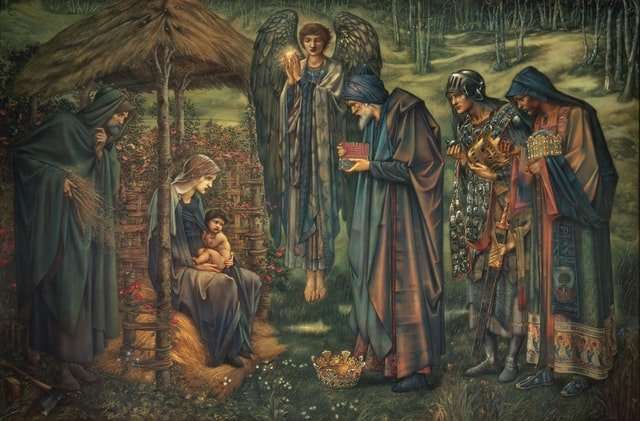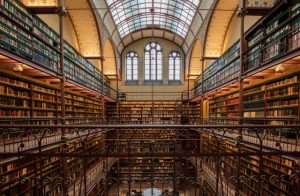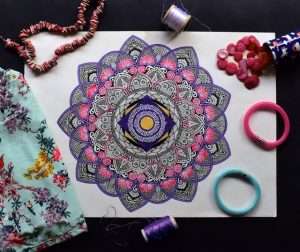The 1920s was a decade of intense artistic and social change. New ways of experiencing art were emerging, new art movements were born. The modernist movement was in full swing, with artists experimenting with the latest styles and techniques.
In the early 20th century, the art world was dominated by the Realists, who focused on everyday scenes and ordinary people. The Post-Impressionists focused on color, texture, and emotion, while the Fauves gave free reign to their expressive brushwork.
Art Nouveau’s organic curves and stylized flowers were being replaced by geometric shapes and patterns in Cubism. While Futurism celebrated motion through dynamic lines, Constructivism explored geometric abstractions. In the United States and Europe, Dadaism challenged everything traditional, while Surrealism pushed the boundaries of what could be depicted in paintings.
In this blog post we will look at some of these popular art styles and movements that emerged in the first half of the 20th century.
The following is a list of art styles and movements from the beginning of the 20th century to the present. Some of these styles are also found in other centuries, but this list is intended to give a general idea about what happened in the art world during this time period.
Visual Arts of Germany (19th Century)
Visual Arts of France (19th Century)
Visual Arts of Britain (19th Century)
Visual Arts of Austria-Hungary (19th Century)
Impressionism (1875-1900)
Post-Impressionism (1890-1904)
Fauvism (1899-1920)
Expressionism (1901-1920)
Cubism and Futurism (1905-1920)
Dada and Surrealism (1916-1960s)
Abstract Expressionism, Action Painting, Color Field Painting and Lyrical Abstraction (1950s-1970s)
Pop Art and Minimal Art (1960s to Present)*
Postmodern Art (1960s to Present)*
*These two movements have yet to be fully defined, although they are still active.
Jackson Pollock and other action painters created abstract paintings by throwing paint at a canvas laid flat on the floor. The paintings were supposed to look like the result of an explosion, or a storm, or to suggest the patterns in nature.
Trompe l’oeil (fool the eye) painters use realistic-looking imagery to trick the viewer into believing that what appears to be real is not. In fact, this kind of art has been around for centuries, though it has gained popularity over time.
The Baroque style of painting was popular from the 1600s until about 1750. It was inspired by art and architecture from ancient Rome and Greece, and characterized by bold brushwork and dramatic lighting effects.
A still life is a painting of ordinary, everyday objects—the opposite of a portrait. Flowers are popular subjects for still-life paintings.
Post-Impressionism was an artistic movement that began in France around 1886. Artists painted in different ways and were interested in different themes than those before them had been.
Surrealism began as an artistic movement in Paris in the 1920s. Surrealist artists were interested in expressing their subconscious thoughts through art. They often used dream imagery and techniques such as automatic writing and drawing to
The 20th century was a time of great change in art. Before the 20th century, most artists worked in one of two ways: either they were craftsmen who learned their trade through an apprenticeship and then made copies of famous works by other artists (the Old Masters) or they were trained in academies where the skills of the craft were taught, but the purpose was to learn how to paint like one of the Old Masters.
Toward the end of the 19th century these two ways of working began to break down. The masters who had been imitated for centuries went out of style, and new styles from Europe and America emerged.
Around 1900, increasing numbers of artists began to work in a very different way: by expressing themselves on canvas about what was happening in their own lives. These artists were interested less in the formal skills that came from copying and more in expressing themselves and finding new styles that suited them. This is why we call this period Modernism: because it was a time when everything seemed new.
Duchamp’s readymades (1917-1963) are examples of Modernism. They are objects that he took out of their everyday usefulness and put on display as art.*
Picasso’s cubist period (1909
Artists of the early 20th Century were often strongly influenced by the art movements of the 19th Century. Artists of the mid-20th Century were strongly influenced by the art movements of the early 20th Century. And those artists who were born after World War II were strongly affected by art movements that came out of the two world wars.
Artists, like all of us, are driven to express something deeper within themselves. When there is a strong movement in society, it can be reflected in their work and make for interesting works.
The three art movements below are very different from each other in their approaches to art. But they also have similarities that will give you some idea about what is going on with modern art today.
Pop art is a style of popular visual art that emerged in the mid-1950s in Britain and the late 1950s in the United States. It was inspired by pop culture and advertising.
The movement is said to have begun with several artists, including Eduardo Paolozzi, who started experimenting with pop culture imagery and techniques in his paintings. The early works of Richard Hamilton, such as Just what is it that makes today’s homes so different, so appealing? (1956), are also considered as precursors of pop art. Pop art is closely related to – or even a development of – Dadaism and conceptual art.
One of the most famous pop artists is Andy Warhol. He became a leading figure in the movement after creating a series of works using images from everyday life, such as Coca-Cola bottles, dollar bills, Marilyn Monroe and Elvis Presley. Many pop artists used images of celebrities combined with text, often very freely interpreted. Many references to “tomorrow” can be found in their works (for example in Warhol’s serigraphs).
Pop art today is sometimes linked with the concept of postmodernism; however, some critics see it as an artistic movement that has continued into the present day.*[http://www
The Art Nouveau movement flourished between 1888 and 1910. Although the name is French, it was a movement that affected all Western art and architecture. Art Nouveau architecture was not popular in America. In fact, the majority of buildings in the United States from this time period were designed from historical styles like Colonial Revival and Richardsonian Romanesque. This is particularly true for large structures like hotels, apartment buildings, and office buildings. The main purpose for this was to appeal to the masses and make what was being built feel familiar to people who might be living or working there.
Art Nouveau architecture in Europe began as a rebellion against the austerity of the Victorian era. This style incorporated organic forms with flowing lines and used a lot of natural materials such as stone, wood, terracotta, brick, ceramics, and stained glass. Its rich colors reflected those found in nature.
Art Nouveau artists drew their inspiration from many sources including Japanese art brought back by explorers like Hiroshige and Hokusai. They also looked to nature with its curving plant forms as well as to historic styles like Baroque.



